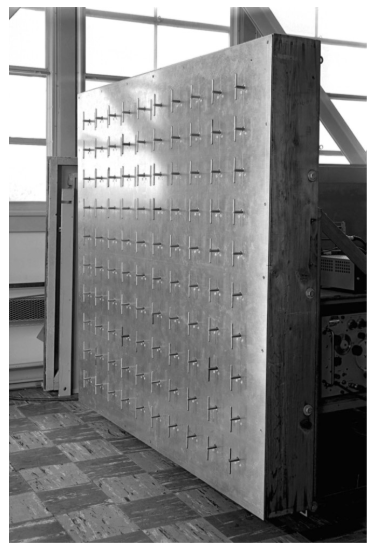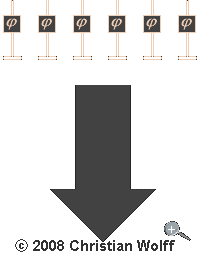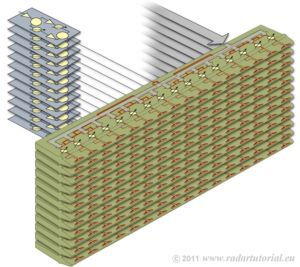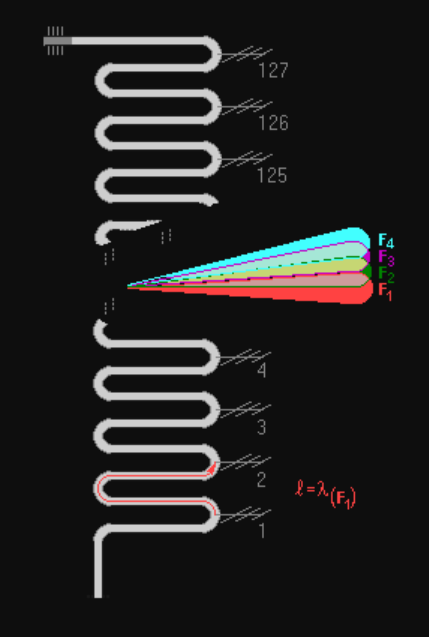Phased Arrays were first invented in 1905 by Karl Ferdinand Braun in order to demonstrate long distance radio communication. During WWII, Phased Array antennas were also used in aircraft landing radar systems. Around the same time period, a German company named GEMA created the long range Mammut radar using multiple phased arrays.
In 1965, the Patriot (Phased Array Tracking Intercept of Target) antenna and missile system was created. This system is still being used today and is important in long distance missile detection. Later in 1974, phased arrays were used in radio astronomy. This led to the discovery of Pulsars at the University of Cambridge. This discovery won the Nobel Prize for Hewish and Ryle. Their large phased array designs are still used today for radar and interferometric radio antennas.
Phased arrays now are most commonplace in radar detection of missiles, satellites, and Wi-Fi. They’re not that commonplace in commercial usage yet because of the expense and need of multiple phase shifters and control signals. However, this is slowly changing as emerging high frequency technologies allow for smaller and cheaper devices. Also, big advantages of arrays are low observability for stealth, large field of view, and increased payload. In today’s article we will explore how Phased Array Antennas work, the types of phased arrays, and their application in modern day MIMO systems.

Example of an early L-band test Phased Array Antenna developed by Sperry Rand and evaluated by MIT Lincoln Laboratory in the early 1960s. Courtesy of MIT.
Operation and Design
Phased arrays are antenna arrays consisting of more than one antenna. There are two commonly used antenna types. First, Patch Antenna devices are designed to be half the wavelength of the frequency of operation. It is usually a small copper square. Second, Dipole Antennas are also half wavelength. However, they consist of a conductor with two power feed lines instead of one. Drawbacks of arrays might be complexity and size. But if we operate the antennas in the arrays at high frequencies, it would mean smaller antennas. Since arrays of small antennas will take up less space, they are more practical for commercial usage.
Phased Array antennas work through the effect of interference. Each antenna in the array is given a separate phase shifter. This is so that each beam can hold a different phase. The phases are chosen such that constructive interference occurs in the direction of interest. In the other directions, destructive interference occurs and the signal will be attenuated (reduced). To illustrate, if two radiators were given the same shift their signals would interfere constructively. Then, the beam will be amplified and could be used for the main beam. Also, any particular type of antenna can be used to radiate the signals. For flexibility in choosing directions, the radiator antennas need to be controlled with variable phase shifts. Additionally, the main beam produced by the array will be in the direction of the increased phase shift.

Animation of electronically controlled phase shifted beam. Courtesy of Christian Wolf.
Phased Array Arrangements
The first and simplest type of array we will discuss is the Linear Arrays. Linear Arrays are made up of “lines” which means that the radiators are put into line arrangements. Also, for every line of radiators there is one phase shifter. This arrangement is nice because it is very simple to put together and fix. However, these arrays are limited because their signals can only be directed to a single plane. On the other hand, Planar Arrays can produce signals that are directed towards more than one plane. However, their cost is a little higher than Linear Arrays because they require one phase shifter per each radiator. Also, the radiators are arranged into a more complicated matrix design.

Diagram of a Planar Array Antenna.
Courtesy of radartutorial.
Another important arrangement is the Frequency Scanning Array. These arrays don’t require phase shifters! Instead, they are set up in a way such that the beam direction is a function of the frequency. This method of beam steering is simple and cost-effective, but the bandwidth of these antennas are very small. As a result, these antennas are prone to picking up extra noise and cannot use pulse compression.

Diagram of a Frequency Scanning Array showing the F band.
F1 is the main frequency, F2 is a resulting beam from processing in the radiators. Courtesy of radartutorial.
Key Advantages of Phased Array Antennas
Phased Array designs allow for some key features. First, with arrays we can achieve increased amplification of both the transmitted and received signal. Second, we can focus the signal in the direction that is most effective to produce maximal gain. Third, since we can direct the signals, there will be less noise and interference from unwanted directions and signals. Fourth, computer controls can direct the signal fast. This makes it agile and operate the most efficiently. Fifth, arrays are multi-functional because they can produce several different beam responses at the same time. Additionally, the overall cost of the antenna array may be much lower compared to one large mechanically steered antenna.
MIMO Appplications
One application of Phased Arrays is the multiple input multiple output (MIMO) technique. MIMO takes advantage of the phenomenon of multipath propagation. Multipath propagation occurs when there are buildings, canyons, lakes, and other types of interference/ reflectors present in the environment. An electromagnetic signal in this environment will scatter and take many different paths to the receiving antenna. Scattering causes cut-out, fading, and can slow down data transmission rates. To solve the issue of scattering, multiple transmitter and receiving antennas can be used. With multiple antennas sending the same signal, the wave will run through paths that may have large or small obstacles.
As a result, the signal will be more clear, powerful, and reliable. This is why modern day MIMO applications include Wi-Fi routers & 5G operating in the millimeter wave band, with high speed gigabit data rates. However, Phased Arrays are very large so they can be partitioned into sections to fit into smaller devices. More work needs to be done to fit Phased Arrays into very compact devices such as cell phones.
Conclusion
Phased Array Antennas are becoming increasingly popular due to their directional efficiency. They are important and promising in applications in the defense industry, broadcasting, and wireless communications. Emerging phased array technologies are being used for 5G efficiency and advanced WiFi routers. We can expect Phased Array Antennas to become more commonplace in the future.

What about the effect of Element failure for small phased Arrays like 256/512 no of elements on the array performance.